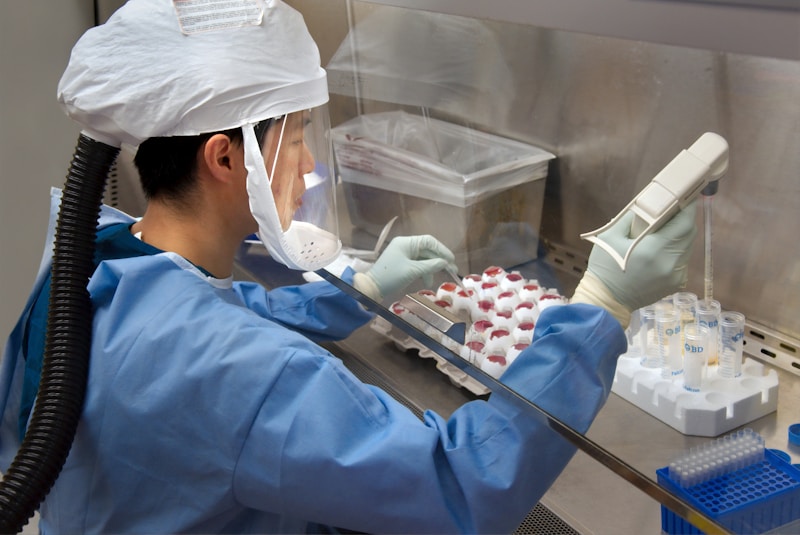Questions and Answers
What is the correct suffix for a plant Family in scientific classification?
-aceae
In scientific classification, what is the importance of getting familiar with terms used to describe plants?
It is essential in classifying families, genera, and species of plants.
Which part of a plant is typically focused on in Macrophotography?
Flowers
What are the essential elements in taking quality plant photos?
Signup and view all the answers
Which plant is commonly known as 'kakawati' and is used for treating scabies and itching?
Signup and view all the answers
What is a distinguishing feature of the flowers in the Asteraceae/Compositae family?
Signup and view all the answers
Which plant family is characterized by having flowers composed of mini-flowers, rather than single flowers?
Signup and view all the answers
What makes the identification of plants in the Asterales order important?
Signup and view all the answers
What is the significance of documenting the position where a plant is collected?
Signup and view all the answers
In plant documentation, what does 'temporal variations' refer to?
Signup and view all the answers
Why is it important to photograph plants' androecium and gynoecium?
Signup and view all the answers
What is the main purpose of forming a holistic mental image of a plant during documentation?
Signup and view all the answers
What is the main difference in considerations between macrophotography and photomicrography when documenting plants?
Signup and view all the answers
What is the recommended approach regarding editing in plant photography based on the text?
Signup and view all the answers
Why is consulting botanical experts like Digital Flora or its Facebook page encouraged for identifying plant samples?
Signup and view all the answers
Why is it important to underline the genus and specific epithet separately in a species name?
Signup and view all the answers
In scientific classification, what is the significance of arranging groups hierarchically according to ranks?
Signup and view all the answers
What kind of photos would macrophotography focus on when capturing the whole structure of a plant in life?
Signup and view all the answers
Which suffix is used for naming a plant order in scientific classification?
Signup and view all the answers
What is a key characteristic of the flowers of mints as described in the text?
Signup and view all the answers
Which plant, according to the text, is used for treating fever, headache, cough, and asthma?
Signup and view all the answers
In the Rosids-Fabids Order, what type of flower structure is characteristic of plants in the Fabales family?
Signup and view all the answers
Which family does the Acacia plant belong to based on the information provided?
Signup and view all the answers
What is the main significance of placentation in plant photography according to the text?
Signup and view all the answers
Why are the flowers of Asterids-Campanulids Order often described as bilateral?
Signup and view all the answers
In plant photography, what distinguishes the flowers of Senna alata (akapulko) from those of Senna occidentalis (balatong aso)?
Signup and view all the answers
What distinguishes the flowers of Composites (Asteraceae/Compositae family) from other plant families?
Signup and view all the answers
What type of tissue is responsible for conducting materials in plants?
Signup and view all the answers
Which type of sectioning involves cutting the plant part perpendicular to its longitudinal axis?
Signup and view all the answers
What is the main purpose of staining in plant microtissue preparation?
Signup and view all the answers
What type of microscope is typically used for studying plant organs at magnifications between 1-10x?
Signup and view all the answers
Which accessory is recommended for providing a reference scale in plant photomicrography?
Signup and view all the answers
What is the primary difference between macrophotography and photomicrography in plant documentation?
Signup and view all the answers
Study Notes
Scientific Classification
- The correct suffix for a plant Family in scientific classification is '-aceae'.
- Familiarizing oneself with terms used to describe plants is important in scientific classification to accurately identify and understand plant characteristics.
Plant Photography
- Macrophotography typically focuses on the flowers of a plant.
- Essential elements in taking quality plant photos include the androecium and gynoecium.
- The main purpose of forming a holistic mental image of a plant during documentation is to understand the plant's overall structure and features.
Plant Characteristics
- The plant commonly known as 'kakawati' and used for treating scabies and itching is Senna alata (akapulko).
- A distinguishing feature of the flowers in the Asteraceae/Compositae family is that they are composed of mini-flowers.
- The plant family characterized by having flowers composed of mini-flowers is Asteraceae/Compositae.
- The identification of plants in the Asterales order is important because it helps in understanding the plant's evolutionary relationships and characteristics.
Documenting Plants
- Documenting the position where a plant is collected is significant because it provides information on the plant's habitat and distribution.
- 'Temporal variations' in plant documentation refer to changes in the plant's appearance over time.
- It is important to photograph plants' androecium and gynoecium because they provide critical information for identification and classification.
Microscopy and Microtissue Preparation
- The main purpose of staining in plant microtissue preparation is to enhance the visibility of plant structures.
- A stereomicroscope is typically used for studying plant organs at magnifications between 1-10x.
- A recommended accessory for providing a reference scale in plant photomicrography is a micrometer scale.
Other Key Facts
- The main difference between macrophotography and photomicrography is the level of magnification, with macrophotography focusing on larger structures and photomicrography focusing on smaller details.
- The recommended approach regarding editing in plant photography is to minimize editing and preserve the original image.
- Consulting botanical experts like Digital Flora or its Facebook page is encouraged for identifying plant samples because they provide authoritative knowledge and expertise.
- Underlining the genus and specific epithet separately in a species name is important because it helps in distinguishing between different species.
- The significance of arranging groups hierarchically according to ranks in scientific classification is that it helps in understanding the evolutionary relationships between different groups.
- The suffix used for naming a plant order in scientific classification is '-ales'.
- The key characteristic of the flowers of mints is that they are bilabiate.
- The plant used for treating fever, headache, cough, and asthma is Lagundi (Vitex negundo).
- In the Rosids-Fabids Order, the characteristic flower structure of plants in the Fabales family is papilionaceous.
- The Acacia plant belongs to the Fabaceae family.
- The main significance of placentation in plant photography is that it helps in understanding the arrangement of ovules in the ovary.
- The flowers of Asterids-Campanulids Order are often described as bilateral because they have radial symmetry.
- The flowers of Senna alata (akapulko) are distinguished from those of Senna occidentalis (balatong aso) by their shape and color.
- The flowers of Composites (Asteraceae/Compositae family) are distinguished from other plant families by their composition of mini-flowers.
- The type of tissue responsible for conducting materials in plants is vascular tissue.
- Cross-sectioning involves cutting the plant part perpendicular to its longitudinal axis.
- The primary difference between macrophotography and photomicrography is the level of magnification.
Studying That Suits You
Use AI to generate personalized quizzes and flashcards to suit your learning preferences.
Description
Experiment 1 - Botanical Photography




